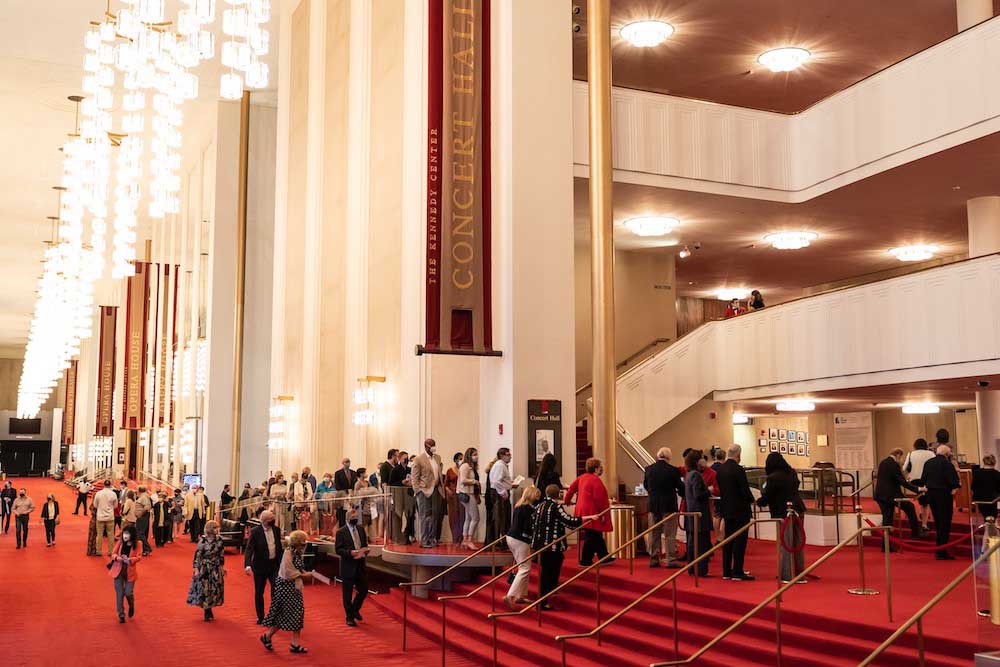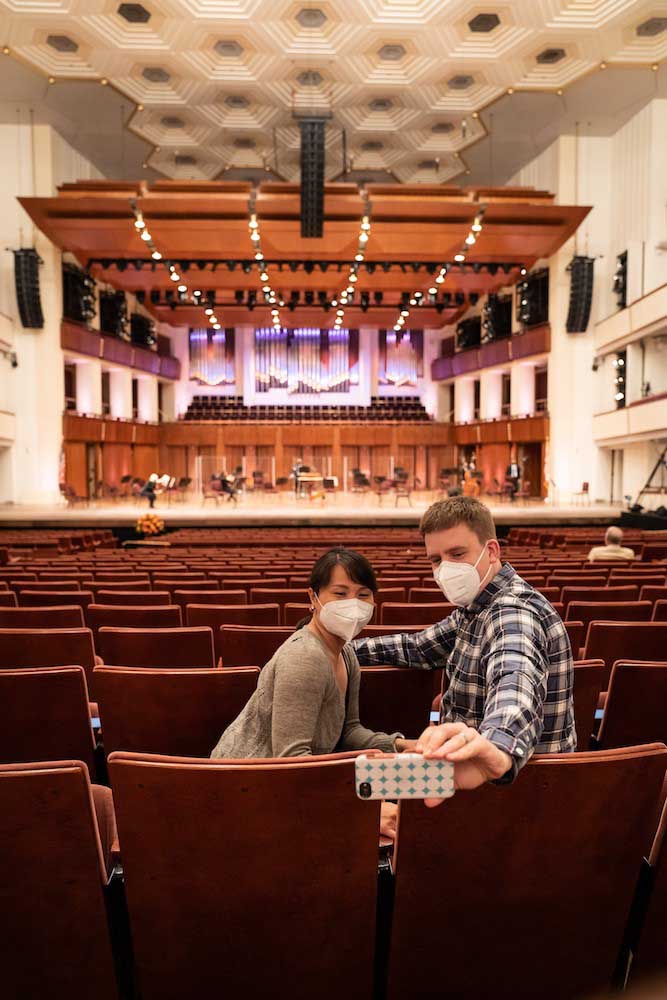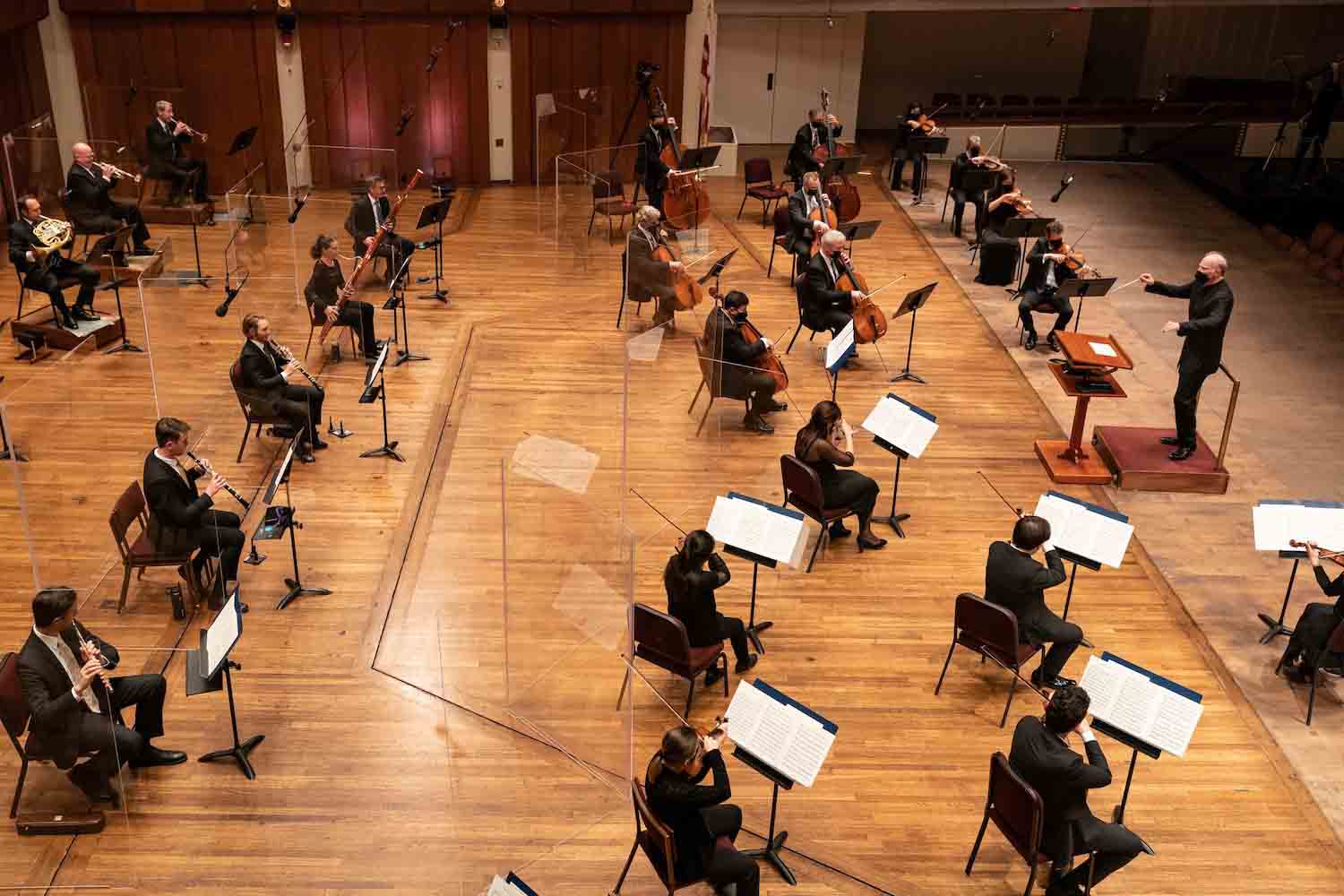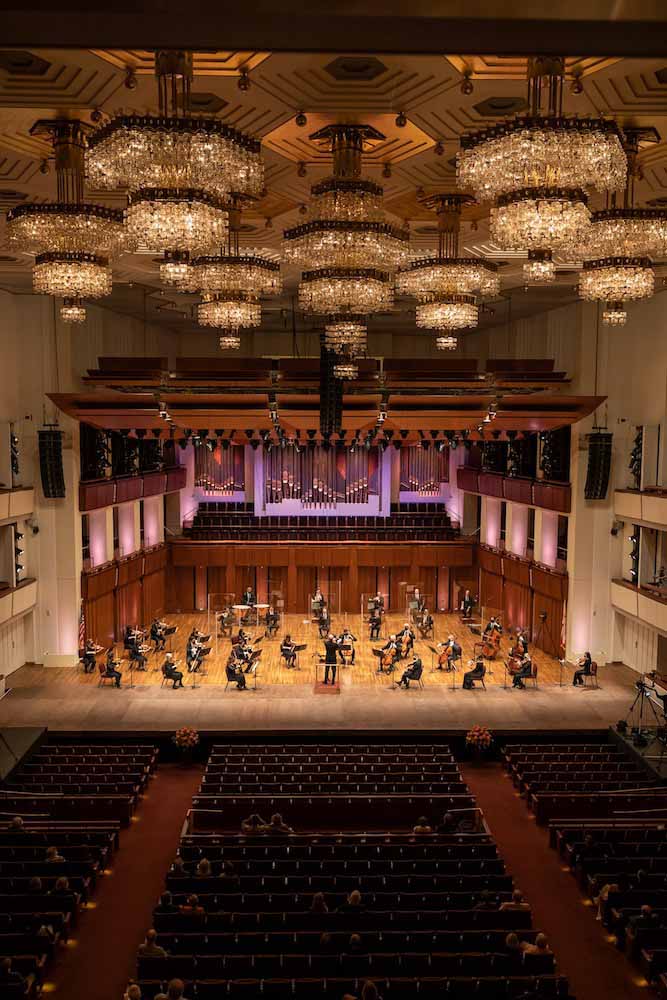For the first time in more than a year, audiences lined up outside the Kennedy Center’s Concert Hall to hear the National Symphony Orchestra perform last week. Musicians and their public were together again to share music after the longest pause in a lifetime.
“It made a huge difference,” said music director Gianandrea Noseda, who returned to Washington for the NSO’s first concerts with a live audience in 15 months. “The alternative until that moment was to have zero persons in the audience, so just to start to have a bit of an audience, who for me are an active part of the performance, has been a gift.”

With regional COVID-19 infection and death rates dropping and pandemic-era restrictions easing, the Kennedy Center quickly pivoted to offer in-person programming. But the engagements are very limited. The NSO is performing only two such programs—one last week and another Thursday, June 3—ahead of the 2021-2022 season that opens in September. (The June 3 concert, which is sold out, will be recorded and broadcast on the Kennedy Center’s Digital Stage+ platform.) The large gaps between concertgoers who filled only about 10 percent of the 2,500-seat auditorium recalled the precarious times. Still, euphoria filled the air.
“It wasn’t until I sat down and started warming up and could hear them talking, the normal pre-concert activities, that’s when it hit me that wow, we haven’t had this in our hall for a really long time,” principal second violin Marissa Regni said. “Everybody in the audience was on fire. It was like a high school reunion.”

Pandemic restrictions also complicated the musicians’ layout. Only 35 to 40 members of the orchestra—about a third of the ensemble—are on stage at any given time as part of COVID-19 protocols developed in consultation with the Cleveland Clinic, all wearing masks, spread out far apart and with plexiglass boxes separating the winds between themselves and from the strings. Musicians are rotated based on the required instrumentation and size of each section.

In order to maintain cohesion in this challenging setting, Noseda relied on his past experience as a young conductor in opera houses directing both the singers on stage and the orchestra in the pit despite the large distance between them.
“Just to be able to listen carefully to each other was more difficult, so they had to make an extra effort to do that,” he explained. “We needed the time to adjust our way to be connected to each other.”
In a traditional setting, musicians sit very close to one another. “I noticed this week, just because of the setup, I am six feet more to the left,” said Regni. “When I sat down and started playing this morning, I was like, wow, this sounds so different than since March when we were sitting this other way… It is exhausting to use your brain like this.”

After a prolonged, deafening silence at concert halls, going back to business as usual is not an option. The classical music world, long dominated by Western white males, is facing a shift propelled by a reckoning over race and gender in the U.S. and beyond, as well as the financial agony caused by prolonged closures. Women and composers of color are now getting some overdue attention.
“We have to take advantage of this situation we are living through to be more adventurous in programming, to be less scared, to be less mainstream…to be more respectful, to be more curious, to have more sense of wonder, to be able to be surprised,” Noseda said. “This pandemic taught us to not take anything for granted.” There is no tokenism here, the conductor insists, only great music, some of which has been underperformed. He has already hired 17 musicians since the 2017–2018 season and his contract is set to last another four years, so his approach is likely to leave a lasting imprint.
Another tack is to surprise the audience. For the June 3 concert, the orchestra will play pieces without announcing them beforehand. Bassoonist Sue Heineman, clarinetist Lin Ma, and bassist Robert Oppelt, all principals in their respective sections, will serve as soloists. “If your evaluation of a composer is not particularly high, even if the piece is spectacularly good, your previous idea doesn’t allow you to really appreciate fully the composition,” Noseda said. “If you don’t know, you are more open.” It’s a formula he tried with great success during his previous stint at the Teatro Regio Torino, which he helped put on the map and where these were some of the most popular events.

When Noseda and the NSO first reunited in March, they recorded a series of four concerts filmed in the empty hall that opened with the First Symphony by Joseph Bologne, the first known classical composer of African descent. The final program closed with Louise Farrenc’s third and final symphony. “Four Novelletten for Strings” by Samuel Coleridge-Taylor, a British composer who was dubbed the “African Mahler” in his time opened last week’s concert. Shostakovich’s Piano Concerto No. 1, with Daniil Trifonov as the soloist, and Haydn’s Symphony No. 95 followed.
At its Wolf Trap summer home, the NSO’s upcoming performances — sans Noseda — include two works by Bologne, among them his only surviving opera, The Anonymous Lover. And the orchestra’s season opening in September is one of its most diverse. There will be seven new commissions and four world premieres, with works by Mason Bates, Peter Boyer, Philip Glass, James Lee III, Missy Mazzoli, Angélica Negrón, and Joan Tower. Guest artists include conductors Paavo Järvi, Yan Pascal Tortelier, and Thomas Wilkins, violinist Hilary Hahn, and pianists Emmanuel Ax, Katia and Marielle Labèque, and Lang Lang. A three-week festival in January will see Noseda conduct works by George Walker and William Grant Still paired with Beethoven’s first, fourth, fifth, and ninth symphonies to be recorded on the NSO’s new label.
“You have to present a variety of music and not to be stuck in the repertoire that usually has been performed,” Noseda said. A true epicurean, he explains “it’s like a restaurant. You can present new recipes, but the point is it should be a good one, it should be the end of research on new ingredients, how it goes together, how is the balance, which is the percentage of that ingredient compared with the others; after that, you bring something new. But always it requires research and curiosity.”
While the NSO musicians were stuck at home in the Washington region and Noseda was under lockdown in Italy, they kept in touch with frequent messages, Zoom meetings, and shared recipes. Noseda also engaged with donors, subscribers and the board of directors. “I tried not to disappear completely and to keep the motivation high,” he said. The times were dispiriting. While the NSO was able to avoid musician layoffs that proved inevitable at other major orchestras, each member faces a 28 percent pay cut for the entire 2020–2021 season, and contractual wage increases were delayed by one year starting in September.
The musicians themselves also found ways to connect to one another. Early on in the pandemic, Regni felt disheartened as her usually busy performance schedule suddenly went blank, with no gigs in sight. So she and three colleagues organized a series of virtual concerts of mostly duets and trios filmed in their homes, something they thought would last just a month or two at most.
In the end, Regni hosted NSO@Home on Sunday evenings for 53 weeks, garnering a total of more than 1.5 million views from around the world. It was a family affair of sorts: Horn player Robert Rearden brought participants into the broadcast, assistant principal oboe Jamie Roberts booked the talent and handled the social media, and second trombone David Murray would research the programs. Roberts’s husband drew the accompanying artwork and Regni’s daughter took care of lighting and technology. The NSO also put together digital concerts with all the musicians recording separately at home before the separate video clips were merged into one in post-production.
The effort paid off. “When I came back for the first time after one year,” Noseda recalled, the musicians “kept their shape and obviously they practiced and that was incredibly rewarding for me. I felt incredibly proud of them. They really cared about being ready when the green light was given, and it was fantastic.”




